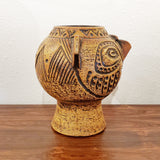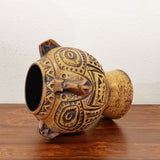


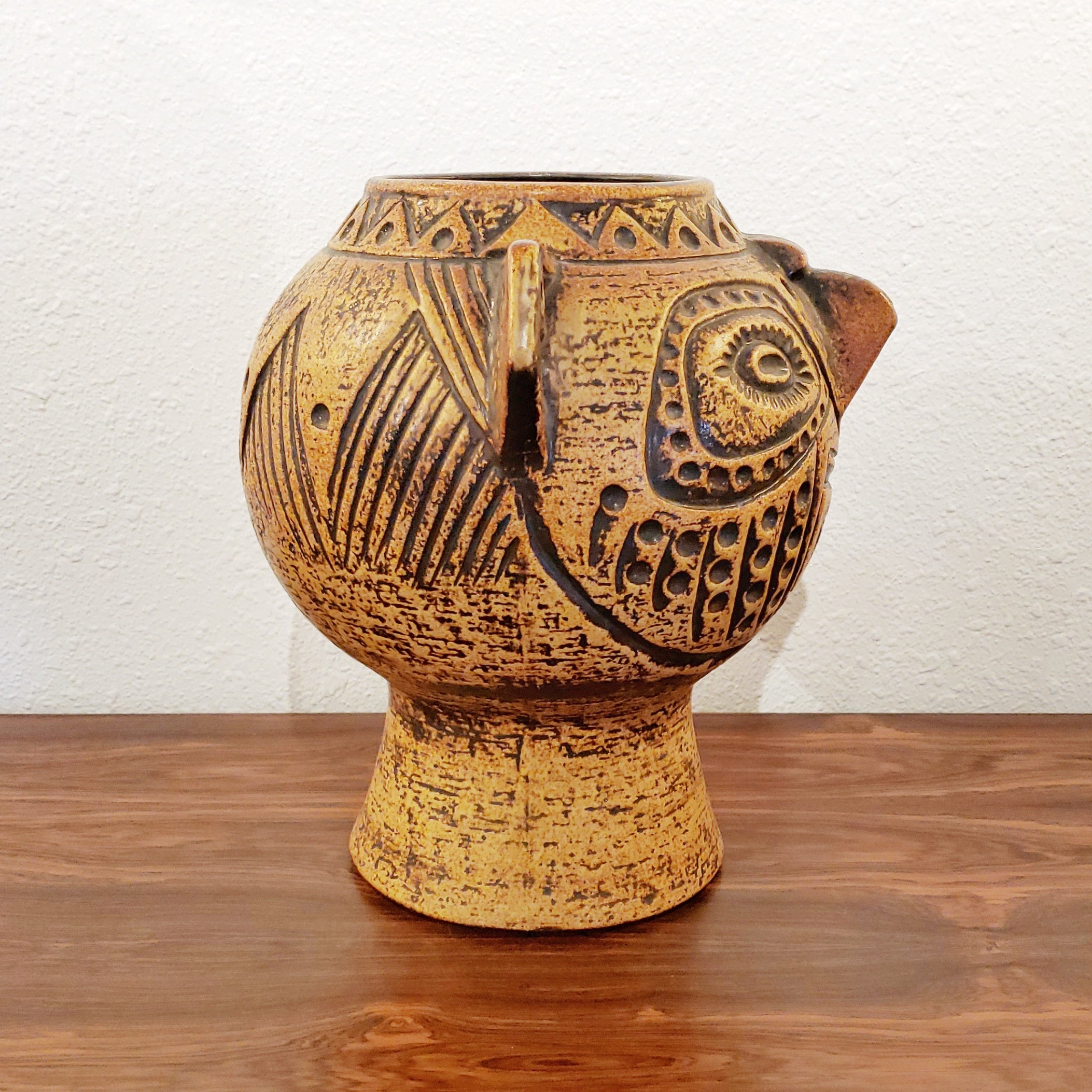
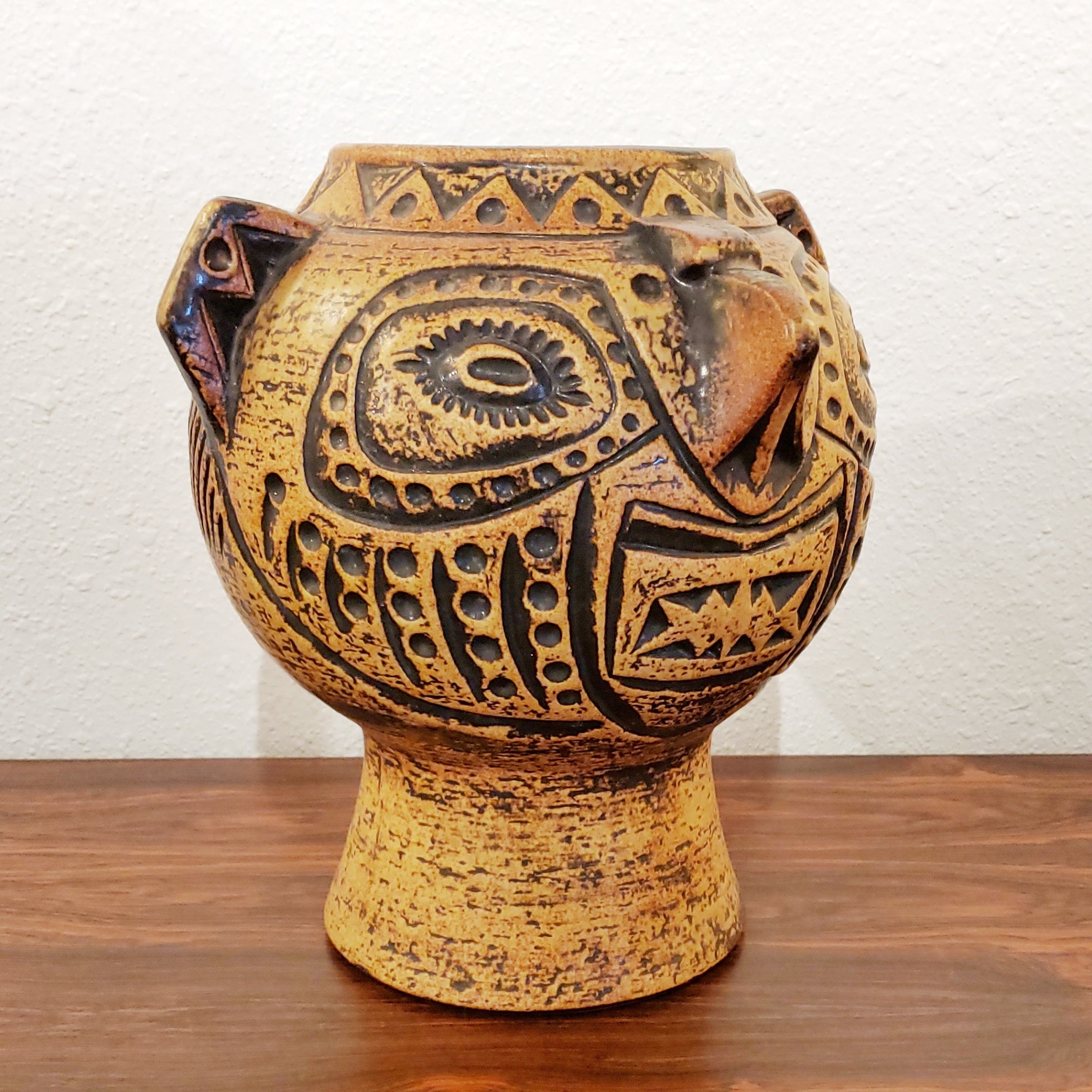

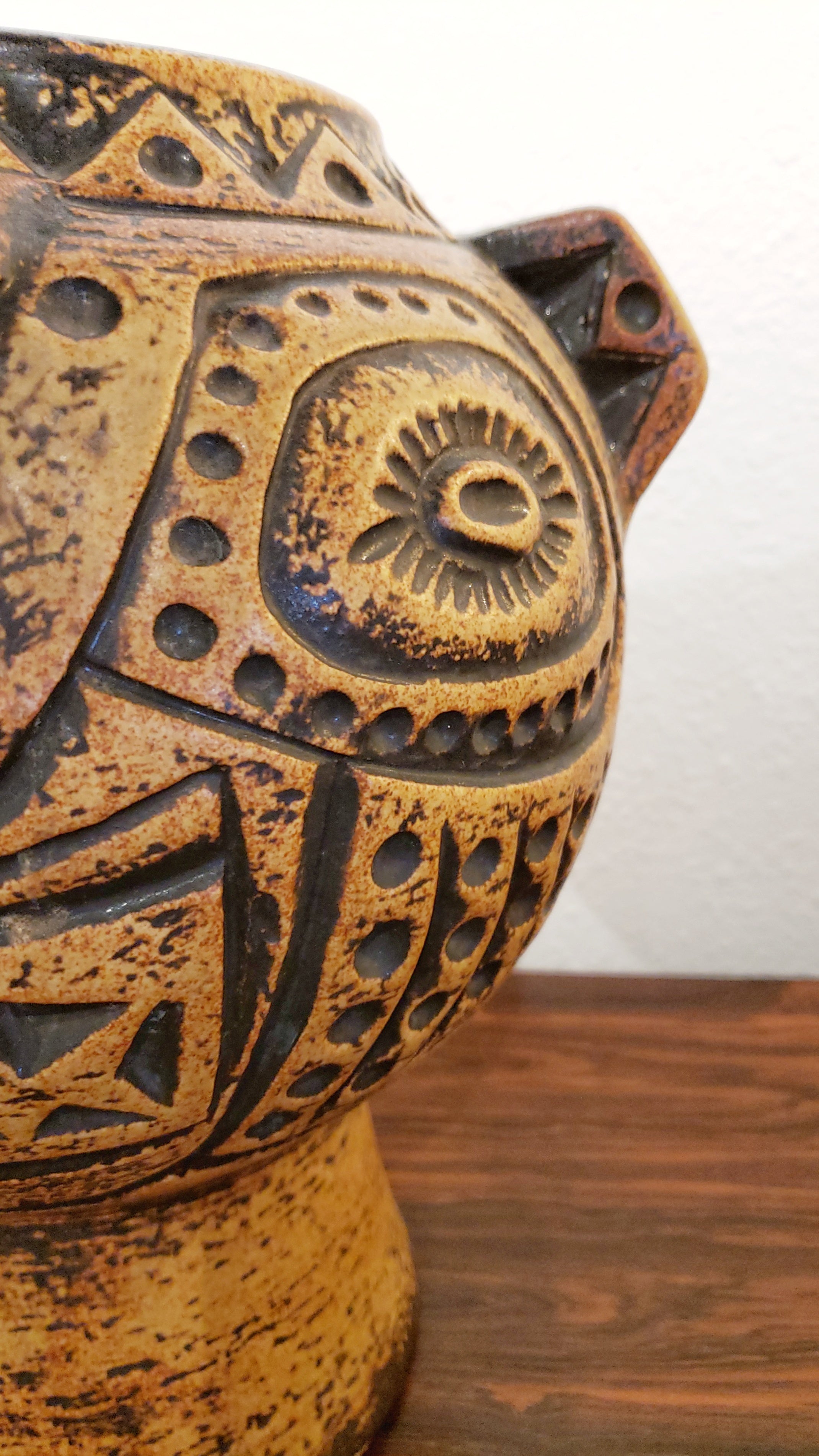

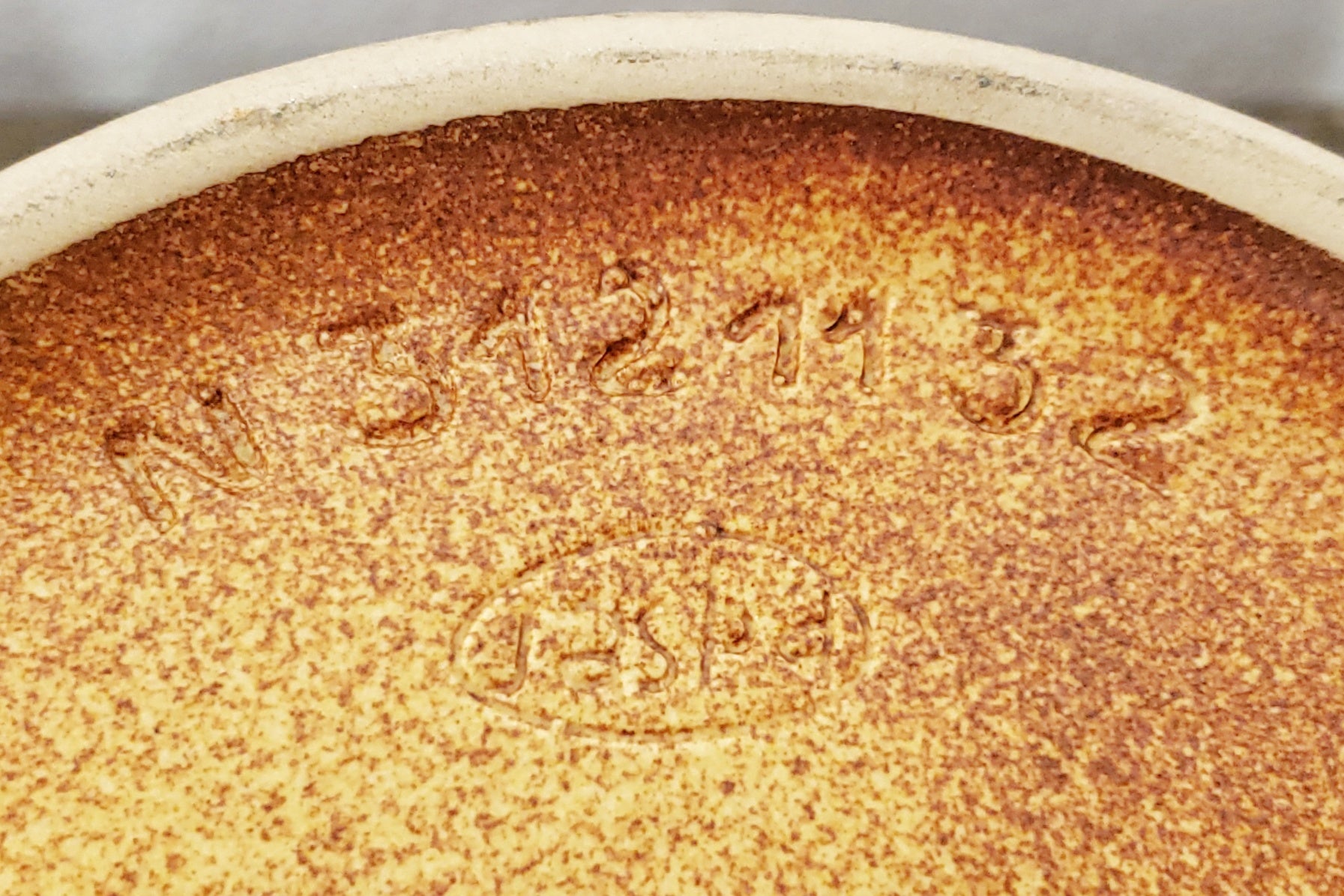
JASBA HEAD VASE Nr. N312/11/32 (RARE)
CONTACT US HERE ABOUT THIS ITEM.
A very rare 'Aztec' relief-décor head vase from JASBA KERAMIK. JASBA produced several series of ceramics on themes inspired by ancient civilizations; among the most sought-after today are examples from the 'Aztec' and 'Mexiko' line. It is quite unusual to find this particular item in the secondary market. Impressed with the maker's mark and mold number on its base. This stupendous vase would make an extraordinary centerpiece with a grand arrangement of flowers sprouting as a crown!
JASBA KERAMIK was founded by Jakob Schwaderlapp in 1926 on a leased property in the small community of Baumbach, today incorporated into the town of Ransbach-Baumbach, in the Rheinland, now the German state of Rhineland-Palatinate, in the heart of the Kannenbäckerland. (The Kannenbäckerland—the potters' land, or more literally the jug-bakers' land—is the site of Europe's largest clay deposit and the home to centuries-old ceramics manufacture.) Schwaderlapp first produced earthenware central-heating systems, but as early as 1928, built a separate factory to accommodate an expansion into domestic wares including terra cotta vases, fruit bowls, and baking dusters. In 1937 glazed ceramics were added. A major fire temporarily interrupted business development in 1938, but the factory was soon rebuilt, and all of the new buildings were equipped with the latest modern technology. Unfortunately, this came about just in time for the outbreak of WWII. JASBA was mostly restricted to contract work for the Wehrmacht (the united armed forces of Nazi Germany) for the duration of the war, but the production of porcelain, stoneware, and ornamental ceramics quickly resumed when the war ended. A steep upward trend followed in the post-war period; the number of employees rose from 80 in 1948 to 480 by 1955. By that time JASBA had grown to be the largest ceramics enterprise in the Westerwald, with a volume of domestic and foreign sales in the seven-digit range, so, when the troubled Porzellanfabrik Niederrhein GmbH in Rees became available in 1957, the decision was made to buy it and convert it to the production of industrial tiles and mosaic wall panels for the building trade. This decision would prove to be one of Schwaderlapp's best.
Meanwhile, the already large range of ornamental ceramics coming out of the parent plant continued to expand. The program was limited to conventional forms and décors until a cautious introduction of modern forms began in 1955. In that year, the décor 'Jaspatina' was introduced, and a year later the very popular crawl glaze 'Cortina' was made available in several color variants. The latter proved to be very successful and remained in the production until the early '60s. At the beginning of 1957, the ceramicist and décor designer Cilli Wörsdörfer joined JASBA KERAMIK following a stint at Ruscha, where she had created the popular 'Domino' and 'Milano' décors (1954). Her colorful, abstract work shook up the previously conventional appearance of JASBA's ornamental ceramics. She struck a special note with the décors 'Tuscany,' 'Udine,' and 'Verona' (1957); she followed these up with 'Ghana' and 'Karo' (1958), all of which are much sought after by collectors of JASBA's '50s-era production.
JASBA's immense repertoire was characterized by diversity. In 1958 alone, 40 different forms of vases were offered in more than 80 sizes and almost 30 different decor variants. In a bid to reach a higher-end market, Schwaderlapp founded JASBA's well-heeled sister company, Ceramano Kunstkeramik W.J. Schwaderlapp KG in 1959. Ceramano would become a powerhouse in its own right with the production of innovative, higher-end forms and glazes, intended to resemble the work of studio potters. Its products were sold in better department stores and speciality shops throughout Europe.
When she married in 1960, Wörsdörfer ended her artistic career, and handed over her position to Christiane Reuter, whose wide ranging 'Bunte Welt der Keramik' (Colorful World of Ceramics) series initiated the introduction of newer stylistic tendencies and bright colorful glazes at JASBA in late 1962. (Reuter is also celebrated as the designer of the iconic 'Acapulco' dinnerware décor for Villeroy and Boch (1967), which remained in continuous production until 1994 and is highly prized by collectors.) JASBA did not do many lava or other textured glazes, but they were especially experimental with shapes and molded patterns. At the end of the 1962 the last typical shapes and decors of the previous decade were retired. The production of decorative ceramics began to decrease at the beginning of the 1970s. In 1981 the focus of production shifted exclusively to the company's extremely successful line of architectural tiles. The business still operates today as Jasba Mosaik.
Design Period – 1970-1979
Country of Origin – WEST GERMANY
Maker – JASBA KERAMIK
Attribution – MARKED
Materials – CERAMIC
Condition – VERY GOOD (no defects; may show slight traces of use)
Height (cm) – 32.0
Width (cm) – 32.0
Depth (cm) – 30.5




